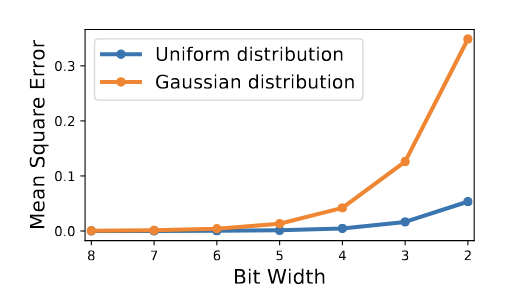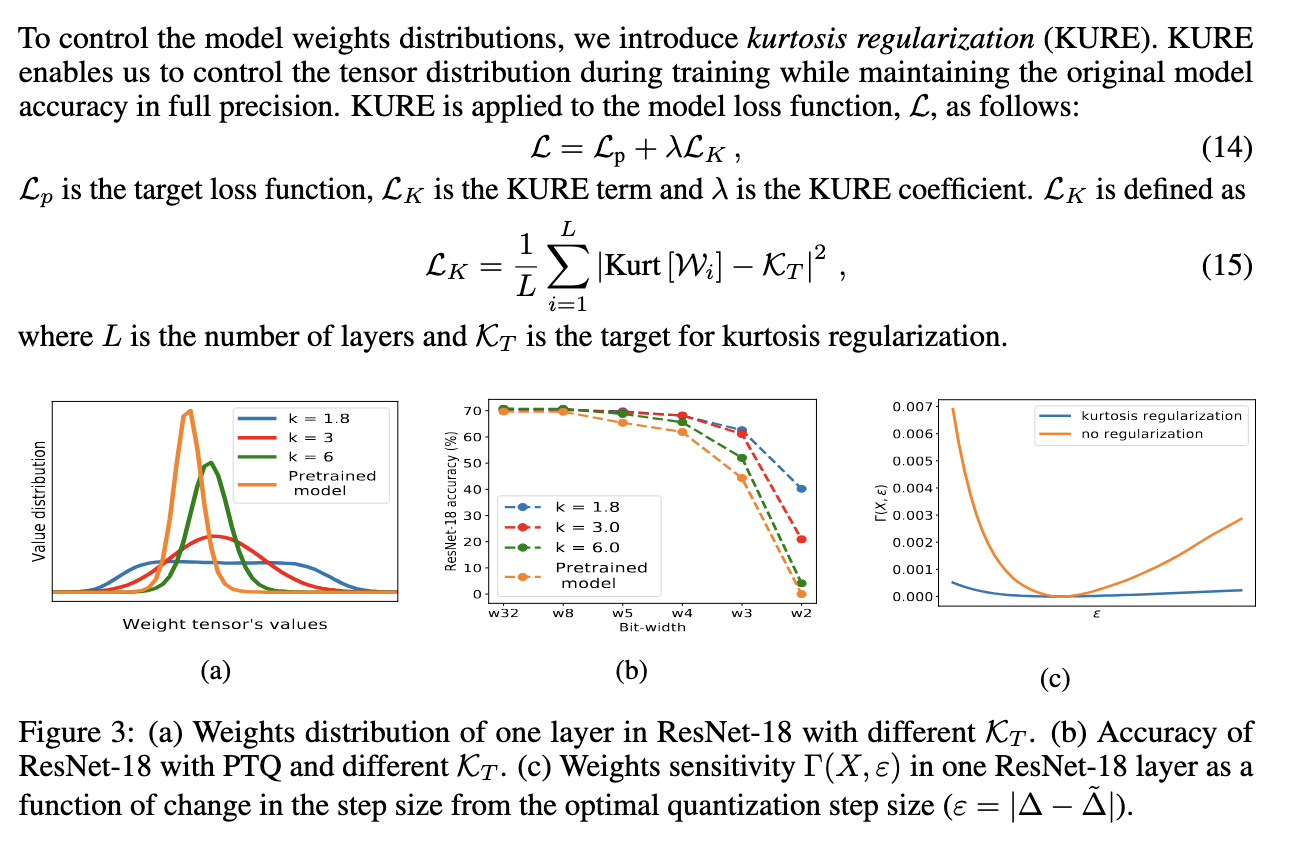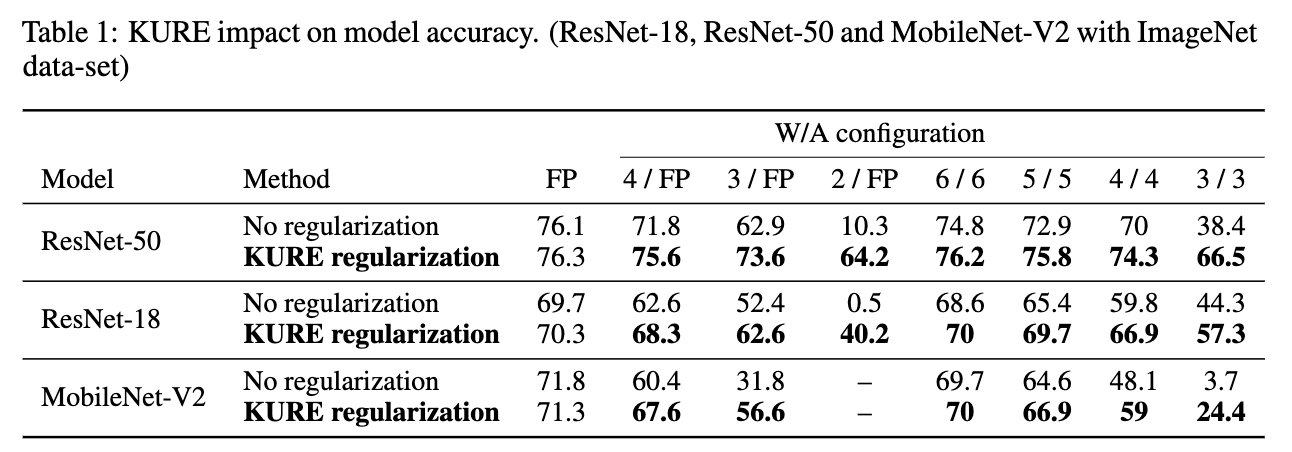Robust Quantization: One Model to Rule Them All
2024-01-15
Keywords: #Quantization
0. Abstract
- Issue: Quantization process is not static and can vary to meet different circumstances and implementations.
- Proposal: A single generic model capable of operating a various bit-widths and quantization policies.
1. Introduction
- QAT: Simulate quantization arithmetic on the fly
- PTQ: Quantize the model after the training while minimizing quantization noise.
- Quantizer Implementations: 1) Rounding Policy, 2) Truncation Policy, 3) The quantization step size adjusted to accommodate the tensor range
- Proposal: A generic method to produce robust quantization models. KURE- A KUrtosis REgularization term, added to the model loss function.
- Contribution
- Prove that uniformly distributed weight tensors have improved tolerance to quantization with higher SNR, and lower sensitivity to specific quantizer implementation.
- KURE- a method to uniformize the distribution of weights
- Apply KURE to ImageNet models and demonstrate that generated models can be quantized robustly in both PTQ and QAT regimes.
2. Related Work
- Robust Quantization
- (Alizadeh et al., 2020) Penalizing the L1 (norm of gradients), which requires running the backprop twice.
- Our work promotes robustness by penalizing fourth central moment (Kurtosis), which is differentiable/trainable.
- We demonstrate robustness to a broader range of conditions e.g. change in quantization parameters as opposed to only changes to different bit-widths.
- Our method applies to both PTQ and QAT while (Alizadeh et al., 2020) focuses on PTQ.
- Quantization methods
- As a rule, these works can be classified into two types:
- post-training acceleration
- training acceleration
- Both suffer from one fundamental drawback- they are not robust to variations in quantization process or bit-widths other than the one they were trained for.
- As a rule, these works can be classified into two types:
3. Model and Problem Formulation

- MSE is the local distortion measure we would like to minimize
- With respect to small changes in the optimal quantization step size, we measure the difference (sensitivity).
- We use Lemma 1 to compare the quantization sensitivity of the Normal dist. with Uniform dist.
3.1 Robustness to varying quantization step size (?)
-
We show that for a tensor $X$ with a uniform distribution $Q(X)$ the variations in the region around $Q(X)$ are smaller compared with other typical distributions of weights. → Ambiguous- uniform $X$, or uniform $Q(X)$?
- Normally distributed: Sensitivity zeros only asymptotically when ∆ (and MSE) tends to infinity. This means that optimal quanti-zation is highly sensitive to changes in the quantizationprocess.
- Uniformly distributed: The optimum ˜∆ is attainedat a region where quantization sensitivity Γ(X_U , ε) tends to zero. This means that optimal quantization is tolerant and can bear changes in the quantization process without significantly increasing the MSE.
3.2 Robustness to varying bit-width sizes
- MSE distortions for different bit-width whwen normal and uniform distributions are optimally quantized.

3.3 When robustness and optimality meet
- For the unifom case, the optimal quantization step size in terms of $MSE(X, \tilde{\delta})$ is generally the one that optimizes the sensitivity.
- The second order derivative w.r.t $\delta$ for sensitivity zeroes at approximately the same location as the optimal quantization step size for MSE.
4. Kurtosis regularization (KURE)
- We use kurtosis- the fourth standardized moment- as a proxy to the probability distribution
4.1 Kurtosis- The fourth standardized moment
- Kurtosis of a random variable $\mathcal{X}$
- If $\mathcal{X}$ is uniformly distributed, its kurtosis value will be 1.8, whereas if $\mathcal{X}$ is normally of Laplace distributed, its kurtosis values will be 3 and 6, respectively.
- We define “kurtosis target” $\mathcal{X}_T$, as the kurtosis value we want the tensor to adopt.
- In this case, the kurtosis target is 1.8 (uniform distribution)
4.2 Kurtosis Loss
- Kurtosis Loss
- Everything below is important

5. Experiments
